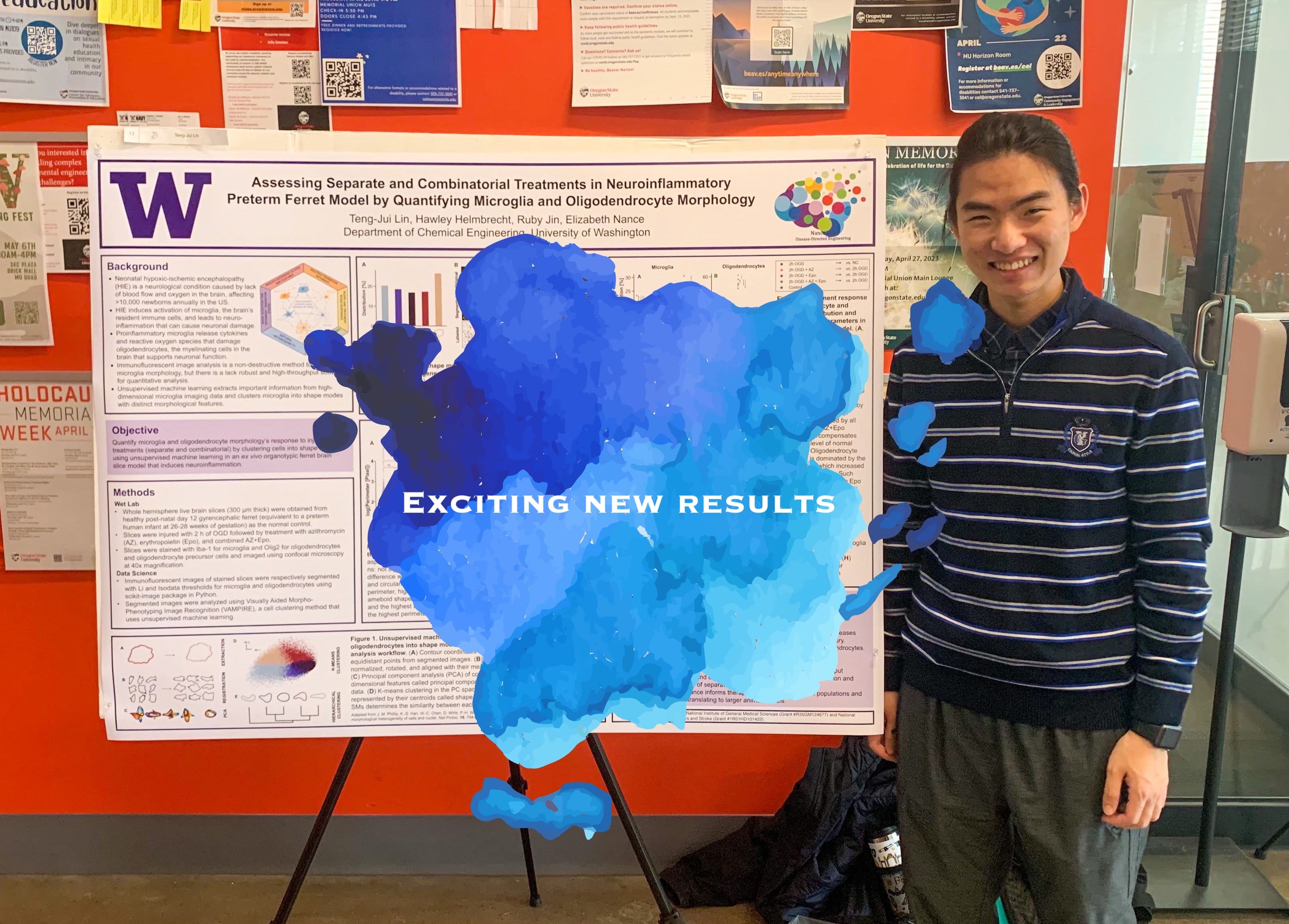Teng-Jui Lin presented his newest poster at the 2023 AIChE Pacific Northwest Student Regional Conference.
Title: Assessing Separate and Combinatorial Treatments in Neuroinflammatory Preterm Ferret Model by Quantifying Microglia and Oligodendrocyte Morphology
Abstract: Neonatal hypoxic-ischemic encephalopathy (HIE), caused by a lack of blood flow and oxygen to the brain, is a major cause of infant mortality. Primary and secondary energy failure caused by HIE activates microglia, resulting in morphological changes and inflammatory cascades that mediate ongoing pathology. Proinflammatory microglia release cytokines and reactive oxygen species that damage oligodendrocytes, the myelinating cells in the brain that supports neuronal function, thereby causing demyelination of neurons. Previous studies in term-equivalent in vivo ferret models showed that microglia respond to injury and treatments with region-dependent cell morphology changes. However, the effect of combinatorial therapy on microglia and oligodendrocyte in a preterm model is unknown. This project aims to quantify image-based morphological features of microglia and oligodendrocyte in response to neuroinflammation and separate and combinatorial treatments in different brain regions of an in vivo preterm ferret model. Using machine learning supported image processing, I quantified microglia and oligodendrocyte morphology in the healthy control group, injury group of two hours of oxygen-glucose deprivation, and treatment groups of azithromycin (AZ), erythropoietin (Epo), and combined AZ+Epo treatment followed by injury. The machine learning algorithm clusters microglia and oligodendrocytes into distinct shape modes with different morphological parameters, such as perimeter, circularity, and aspect ratio. Perimeter and circularity of both microglia and oligodendrocytes show regional heterogeneity within each shape mode while aspect ratio is homogeneous. Microglia perimeter decreases upon injury in crescent and rod-like shape modes. Epo treatment reverses the decrease to the level of nontreated control, but AZ+Epo treatment only partially reversed the decrease. By quantifying microglia and oligodendrocyte morphological response to neuroinflammation and treatments across regions, I non-destructively assessed therapeutic performance of separate and combinatorial treatments in the preterm ferret model. The assessed performance informs therapeutic choices for preterm populations and have the potential for translating to larger animal models.
